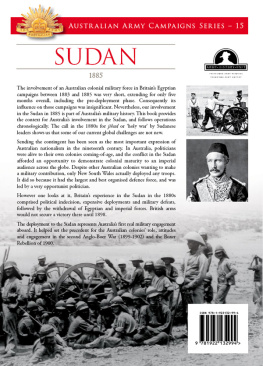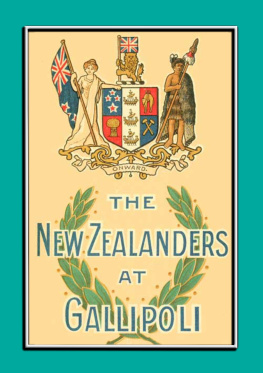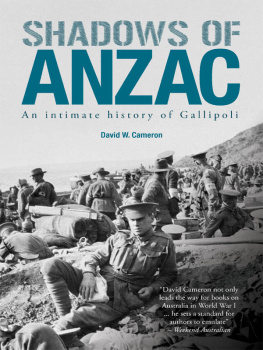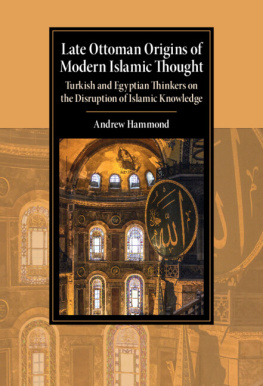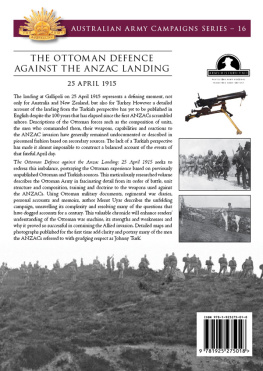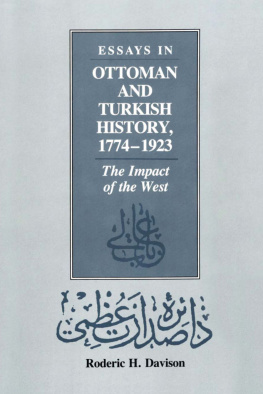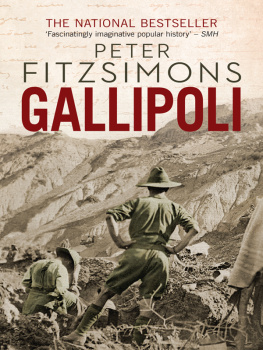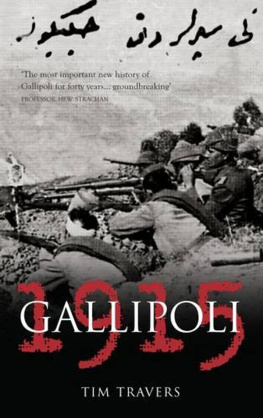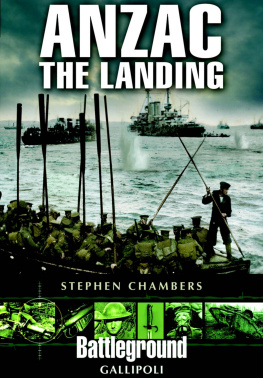
Copyright Army History Unit
Campbell Park Offices (CP2-5-166)
Canberra ACT 2600
AUSTRALIA
(02) 6266 4248
(02) 6266 4044 fax
Copyright 2011 Commonwealth of Australia
First published 2014
This book is copyright. Apart from any fair dealing for the purposes of private study, research, criticism or review as permitted under the Copyright Act, no part may be reproduced, stored in a retrieval system or transmitted in any form or by any means, electronic, mechanical, photocopying, recording or otherwise, without written permission.
See National Library of Australia for Cataloguing-in-Publication entry.
ISBN: 978-1-922132-99-4
Published by Big Sky Publishing, Sydney
Cover and typesetting by Think Productions, Melbourne
Printed in China through Asia Pacific Offset Limited
Front cover and title page: Departure of the NSW Contingent from Sydneys Circular Quay. Contemporary lithograph. Source: National Library of Australia.
Back cover background: New South Wales artillery. Source: National Archives of the United Kingdom.
Back cover top right: General Charles Gordon.
Back cover bottom right: Royal Navy Gatling gun crew.
In 2004, the then Chief of Armys Strategic Advisory Group, the Armys senior generals, established a scheme to promote the study and understanding of military history within the Army. The focus was the Armys future generation of leaders and, from this, the Campaign Series was created. The series is intended to complement the Armys other history publications, which are major analytical works of high quality, academically rigorous and referenced.
The Campaign Series focuses on leadership, command, strategy, tactics, lessons and personal experiences of war. Each title within the series includes extensive visual sources of information maps, including specifically prepared maps in colour and 3D, specifically commissioned artwork, photographs and computer graphics.
Covering major campaigns and battles, as well as those less known, the Army History Unit and its Campaign Series provides a significant contribution to the history of the Australian Army and an excellent introduction to its campaigns and battles.
Roger Lee
Army Historian
I would like to thank Mr. Roger Lee and Dr. Andrew Richardson of the Army History Unit, Canberra, the Australian War Memorial and the State Library of New South Wales. This book has been enhanced by the editorial skills of John Donovan.
The text is supported by illustrations prepared by Glenn and Mark Walhert and Jeff Isaacs. Denny Neave, the series publisher, was a patient collaborator in designing maps and arranging photographs, lithographs and illustrations.
Ansar: | a name sometimes given to the Mahdis combined army |
Baggara: | cattle herding tribe |
Bey: | Ottoman honorary title for a governor of a province or senior officer in the Egyptian Army |
Dervish: | a member of a Muslim sect |
Khedive: | viceroy; it was first used in the early 1800s by the Governor of Egypt and Sudan, who was a vassal or subordinate of the Ottoman Empire. This self-declared title was officially recognized by the Ottoman government in 1867, and used subsequently by Ismail Pasha and his successors until 1914 |
Khor: | a dried watercourse |
Mahdi: | the Guided One (of the Prophet) |
Pasha: | an honorary title of rank given to army generals (including British officers) of armies within the Ottoman Empire |
Sirdar: | the title of the British commander in chief of the Egyptian Army |
Sulleetah: | a canvas or cloth carryall bag slung from a camels saddle |
Whaler: | a 15 metre wooden boat, which could carry up to ten soldiers and two crew |
Zareba: | a makeshift defensive enclosure usually constructed of brushwood, Mimosa or thorn bush |
Abbreviations |
BL: | breech loading |
Bn: | battalion |
CB: | Companion of the Order of the Bath |
CSI: | Companion of the Star of India |
EP: | [Tent] European Privates |
KCB: | Knight Commander of the Order of the Bath |
KCSI: | Knight Commander of the Star of India |
KCMG: | Knight Commander of the Order of St Michael and St George |
KIA: | killed in action |
NCO: | non-commissioned officer |
NSW: | New South Wales |
NSWAMC: | New South Wales Army Medical Corps |
OM: | Order of Merit |
PMO: | Principal Medical Officer |
RE: | Royal Engineers |
RHA: | Royal Horse Artillery |
RM: | Royal Marines |
RMA | Royal Marine Artillery |
RML: | rifled muzzle loaded gun |
RMLI | Royal Marine Light Infantry |
RN: | Royal Navy |
VC: | Victoria Cross |
WIA: | wounded in action |
The involvement of an Australian colonial military force in Britains Egyptian campaigns between 1883 and 1885 was very short, extending for only five months overall, including the pre-deployment phase. Consequently its influence on those campaigns was insignificant. Nevertheless, our involvement in the Sudan in 1885 is part of Australias military history. This book provides the context for Australias involvement in the Sudan, and follows operations chronologically. The call in the 1880s for jihad or holy war by Sudanese leaders shows us that some of our current global challenges are not new.
The deployment of the Sudan contingent foreshadowed themes that have emerged in Australias military history over the past century or more. These include the short-lived longevity of popular support for overseas deployments and the role of Australian forces as a junior partner in coalition warfare.
Sending the contingent has been seen as the most important expression of Australian nationalism in the nineteenth century. In Australia, politicians were alive to their own colonies coming-of-age, and the conflict in the Sudan afforded an opportunity to demonstrate colonial maturity to an imperial audience across the globe. Despite other Australian colonies wanting to make a military contribution, only New South Wales actually deployed any troops. It did so because it had the largest and best organised defence force, and was led by a very opportunist politician.
The late nineteenth century was also a time when European countries scrambled for empire as they carved up the known parts of the continent of Africa, and explored, exploited and conquered what had not yet been discovered. Such intervention, however, could backfire and drag them into long and expensive periods of war or occupation. This proved to be the case with Britains involvement in Egypt.
Next page
